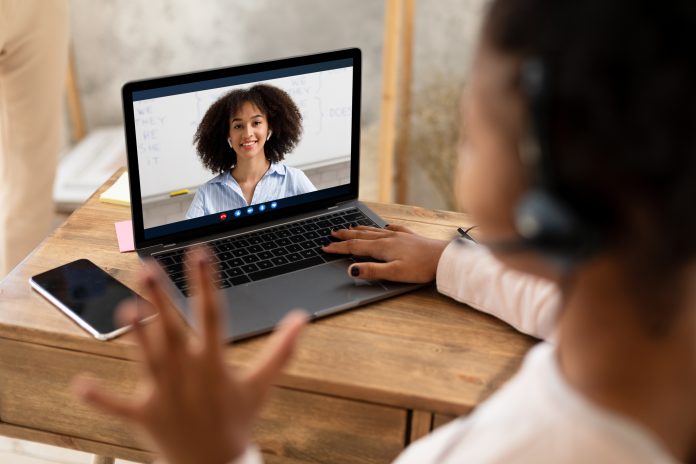Colin Hegarty, founder of HegartyMaths and Education and Schools Director at Sparx, explores why schools should focus on edtech tools that encourage active engagement and personalisation as they prepare for further months of blended learning
During this period of remote learning schools have adopted a wide variety of teaching methods –from live lessons and pre-recorded content to physical workbooks and offline reading. Teachers know that the best learning occurs when students are doing something besides passively listening. Whether on or offline the most effective teaching engages students in a range of meaningful activities. However, this ideal has been seriously challenged by the practicalities of remote schooling during the pandemic. How can schools effectively engage students in meaningful activities at distance?
With the continuing need for long-term remote learning and increased use of blended learning models, can technology really enable engaged learning? And if so, what does success look like?
Throughout lockdown we’ve seen schools answering the remote learning challenge in myriad ways, on and off-line; YouTube tutorials, online workbooks, hardcopy learning packs and online lessons. The choices schools have made have been based on a range of variables; students’ access to at-home technology, teachers’ tech skills, legacy systems and the school’s level of pre-COVID tech adoption. There’s been no single model and no agreement on what works best.
However, as identified in NEfR’s latest report into lockdown learning experiences it’s been shown that technology that promotes online conversations or “activities that involve consolidating previous learning or revising have higher pupil engagement levels and an increased probability of having highly engaged disadvantaged pupils”.
With three months of lockdown experience to draw on, evidence suggests that those who have adopted creative methods, using a variety of technologies have seen higher engagement across the board. Further, the technologies that seem to deliver the highest engagement are those that foster conversation, collaboration and personalised experiences.
At one end of the spectrum are technologies that allow teachers to live stream lessons, which many teachers have taken to with fantastic enthusiasm. My own live-streamed Year 11 lessons attracted over 700 students tuning in life, with comments and questions in the hundreds.
The screen seemed to give many the courage to ask for help where they might have previously retreated into the background. Other teachers who have live-streamed have had a similar experience. It’s amazing how some students seem much more comfortable asking for help on chat functions than they do raising their hands in class.
For Year 11 students I was keen to reactivate their ‘habit of learning’ though these daily lessons. Live lessons require them to show up at a specific time ready to learn, this is critical for building a routine and commitment. From the feedback we’ve had from students, this strategy appears to have paid dividends. However, there are limitations to how engaging this style of live-streamed learning really is.
Let’s not forget that “students participate when they are doing something besides passively listening.” Live-streaming isn’t necessarily engaging or participatory unless teachers are able to build in wider elements that students have the ability to engage within the home environment. This is not as easy as it sounds when they might be contending with a lack of space, other siblings or materials.
Similarly, we know that teachers are not just static, front-of-class lecturers! In the classroom, teachers help children through intervening when they see they don’t understand something.
They are brilliant at interfering – they nudge reluctant learners, encourage and praise. It’s extremely hard to do this remotely. Teachers just don’t have the visibility nor the capacity.
Where technology can really support engaged learning is where it goes beyond video chats and live lessons. Enabling greater personalisation for each student, providing individualised feedback and helping teachers to provide relevant and timely support.
This is where technologies such as AI and machine learning can earn their ‘hero’ status. Using AI technologies personalised content can be delivered remotely to students and allow for instant feedback – key to encouraging continued engagement. These technologies also provide greater insights for the teacher through rich and immediate data feedback. The best-personalised learning technologies are those that can shift seamlessly to the classroom to the online environment and back again, complementing and supporting teachers to do what they do best. They don’t attempt to replace them. In fact, nothing can replace the teacher – edtech that claims to do so should signal a huge red flag.
Teachers might not be physically present to notice the subtle signs that students are struggling. However, with digital platforms giving them easy-to-access data on the immediate progress of each student, at a glance they are able to see where support is most needed – even at distance. Keeping teachers at the heart of learning, technology can enable them to direct that support where it’s most needed – even from afar.
What’s clear from the pandemic is that edtech can’t replace the expertise of teachers but can complement teacher-led learning and support them to deliver their best, whether in the classroom or remotely. As the NEFR’s report suggests, schools should seek to focus on blended and remote learning strategies that promote pupil engagement but also bear in mind the additional burden on teacher time this creates. This is where technologies really have the opportunity to help crack the ongoing challenge that coronavirus so starkly presents.











